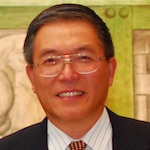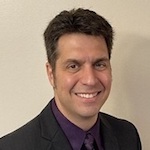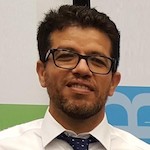Session 8 at the NASF SUR/FIN Technical Conference will be on “Innovations for Improving Productivity.”
Here are the abstracts for the presentations on June 8. Please visit www.nasfsurfin.com for information on registering for the event:
Session 8: Innovations for Improving Productivity
Session Chairs Dr. Jim Lindsay, NASF, and Dev Massimi, American Plating Power
8:30 – 9:00: Maintenance Trends in DC Power Supplies for the Metal Finishing Industry — Remington Schieffer, Dynapower
 DC Power Equipment designs and implementation vary from different manufacturers and different line builders. Maintenance requirements and best practices will not only change based on the brand of power supply you have, but also HOW you use it. Analysis from Dynapower's maintenance team shows a variety of trends for metal finishing processes, line designs, and maintenance practices. The data includes Steel Facilities, Plating Shops, Anodizers, and other electrocoating applications. The data includes 50-years-worth of equipment deployed from over 10 different manufacturers. Analysis includes cost of maintenance and % of equipment initial investment
DC Power Equipment designs and implementation vary from different manufacturers and different line builders. Maintenance requirements and best practices will not only change based on the brand of power supply you have, but also HOW you use it. Analysis from Dynapower's maintenance team shows a variety of trends for metal finishing processes, line designs, and maintenance practices. The data includes Steel Facilities, Plating Shops, Anodizers, and other electrocoating applications. The data includes 50-years-worth of equipment deployed from over 10 different manufacturers. Analysis includes cost of maintenance and % of equipment initial investment
9:00 – 9:30: Technology Assessment for Sustainability Performance Improvement of Metal Finishing Facilities — Abdurrafay Siddiqui, Rebecca Potoff, and Professor Yinlun Huang, Wayne State University
 Accelerated technology innovation entails rapid transfer of new technologies to the design and manufacturing of high performance products and services. While those technologies become an engine of change and progress, the net profit brought to the environment and society could be questionable, if sustainability principles were not fully incorporated into technology development and application phases. In the metal finishing industry, numerous technologies are being developed, tested, or adopted in metal finishing facilities. It is highly desirable that those technologies are evaluated systematically for their sustainability performance improvement potentials. In the past year, we developed a metal-finishing-specific sustainability metrics system. The metric system is composed of three sets of indicators for measuring over forty aspects of sustainability. In this presentation, we introduce a technology evaluation methodology where the sustainability metrics system is incorporated. The methodology can be used to conduct a detailed analysis of sustainability performance of each technology, and rank the evaluated technologies according to the predicted sustainability performance and impact on profitability of a metal finishing facility, if they are adopted. The efficacy of this proposed methodology is shown through case studies looking at different technologies and their effects on electroplating facilities.
Accelerated technology innovation entails rapid transfer of new technologies to the design and manufacturing of high performance products and services. While those technologies become an engine of change and progress, the net profit brought to the environment and society could be questionable, if sustainability principles were not fully incorporated into technology development and application phases. In the metal finishing industry, numerous technologies are being developed, tested, or adopted in metal finishing facilities. It is highly desirable that those technologies are evaluated systematically for their sustainability performance improvement potentials. In the past year, we developed a metal-finishing-specific sustainability metrics system. The metric system is composed of three sets of indicators for measuring over forty aspects of sustainability. In this presentation, we introduce a technology evaluation methodology where the sustainability metrics system is incorporated. The methodology can be used to conduct a detailed analysis of sustainability performance of each technology, and rank the evaluated technologies according to the predicted sustainability performance and impact on profitability of a metal finishing facility, if they are adopted. The efficacy of this proposed methodology is shown through case studies looking at different technologies and their effects on electroplating facilities.
9:30 – 10:00: Using Six Sigma to Save on Maintenance: a Better Pm Program — Remington Schieffer, Dynapower
 Six Sigma is not just for math geeks. The statistical data analysis tools and methodology have allowed people across the manufacturing world the power to sort through the muck of numbers their business is producing in order to find useful, time saving, and cost curbing metrics to drive their success. Data Collection and Management is the new wave in intelligent management control structures. He who has the most data wins. Rectifiers are the big, scary boxes next to the line that seem to be the cause for a lot of headache in the metal finishing industry. If you have ever worked on one, regardless of the brand, you know it seems to work for a long time ... until it doesn't. Once the magic white smoke comes out of the machine, you need to hire an expert to reload that magic smoke. But are they really that ambiguous and difficult? Now days, there are so many different types, configurations, and data reporting capabilities. What does the data being reported mean for your process, and how can you use that to your advantage?
Six Sigma is not just for math geeks. The statistical data analysis tools and methodology have allowed people across the manufacturing world the power to sort through the muck of numbers their business is producing in order to find useful, time saving, and cost curbing metrics to drive their success. Data Collection and Management is the new wave in intelligent management control structures. He who has the most data wins. Rectifiers are the big, scary boxes next to the line that seem to be the cause for a lot of headache in the metal finishing industry. If you have ever worked on one, regardless of the brand, you know it seems to work for a long time ... until it doesn't. Once the magic white smoke comes out of the machine, you need to hire an expert to reload that magic smoke. But are they really that ambiguous and difficult? Now days, there are so many different types, configurations, and data reporting capabilities. What does the data being reported mean for your process, and how can you use that to your advantage?
10:00 – 10:30: Unleashing Significant Savings in Alkaline and Acid Zinc-Nickel Finishing with Membrane System Solutions — Tony Oriti, MacDermid Enthone
 With conventional anodes, both alkaline and acid zinc plating systems have some nuances that make them less than ideal to operate, and eventually reduce the plating processes’ productivity. While the productivity in alkaline zinc-nickel processes decreases with use due to the formation of breakdown products, acidic zinc-nickel electrolytes suffer from increased need for maintenance of the zinc anodes and the electrolyte solution. Decreased productivity, bath maintenance, and potential quality issues all mean elevated cost. These elevated costs can be eliminated by using dedicated membrane solutions which avoid the stated issues and allow for continuous and consistent production. We will explore how these systems work, and where they can be used most efficiently in a plating operation.
With conventional anodes, both alkaline and acid zinc plating systems have some nuances that make them less than ideal to operate, and eventually reduce the plating processes’ productivity. While the productivity in alkaline zinc-nickel processes decreases with use due to the formation of breakdown products, acidic zinc-nickel electrolytes suffer from increased need for maintenance of the zinc anodes and the electrolyte solution. Decreased productivity, bath maintenance, and potential quality issues all mean elevated cost. These elevated costs can be eliminated by using dedicated membrane solutions which avoid the stated issues and allow for continuous and consistent production. We will explore how these systems work, and where they can be used most efficiently in a plating operation.
10:30 – 11:00: Chromium Recovery and Recycling from Surface Finishing Wastewater — Dr. Aziz Gherrou, Chembrains
 Chromium, in its hexavalent form (Cr6+), a heavy metal largely used in surface finishing industry, is highly toxic to humans, animals, plants and microorganisms. Therefore, it should be removed from contaminated wastewater. For this purpose, the most commonly used approach is its reduction in the form of trivalent chromium (Cr3+), the least toxic, and then its precipitation. This process is harmful for the environment since it needs the utilization of large quantities of chemicals and generates considerable amounts of sludge disposed of to landfills. Over the past two decades, there has been significant interest in using zero-valent iron (ZVI) as a Cr6+ reduction agent. This article describes the results of industrial-scale tests at a facility in an anodization plant in Quebec, generating acid effluents that are mainly loaded with Cr6+. The results show that it is possible to reduce total chromium concentrations in the drain to values below 0.1 mg/L while the discharge limit is 5 mg/l, without any chemical dosing and sludge production. On the other hand, chromium is recovered as a valorizable material which recycled and reused for stainless steel production.
Chromium, in its hexavalent form (Cr6+), a heavy metal largely used in surface finishing industry, is highly toxic to humans, animals, plants and microorganisms. Therefore, it should be removed from contaminated wastewater. For this purpose, the most commonly used approach is its reduction in the form of trivalent chromium (Cr3+), the least toxic, and then its precipitation. This process is harmful for the environment since it needs the utilization of large quantities of chemicals and generates considerable amounts of sludge disposed of to landfills. Over the past two decades, there has been significant interest in using zero-valent iron (ZVI) as a Cr6+ reduction agent. This article describes the results of industrial-scale tests at a facility in an anodization plant in Quebec, generating acid effluents that are mainly loaded with Cr6+. The results show that it is possible to reduce total chromium concentrations in the drain to values below 0.1 mg/L while the discharge limit is 5 mg/l, without any chemical dosing and sludge production. On the other hand, chromium is recovered as a valorizable material which recycled and reused for stainless steel production.
11:00 – 11:30: Prevention of Effluent Exceedances Through Clarification Optimization — Steven Buday, Haviland Products
 Flocculants are available in several varieties and their application is dependent upon plant conditions. Application of flocculants is the critical first steps in clarification. This presentation will cover selection, application, make-down and storage of flocculants. With a consistent floc, one can then focus on a solids management program. Critical to the success of a solids management plan, is to be sure it fits the needs and nature of the facility. This discussion involves the balance between solids loading, clarification, and dewatering operations to ensure ongoing compliance.
Flocculants are available in several varieties and their application is dependent upon plant conditions. Application of flocculants is the critical first steps in clarification. This presentation will cover selection, application, make-down and storage of flocculants. With a consistent floc, one can then focus on a solids management program. Critical to the success of a solids management plan, is to be sure it fits the needs and nature of the facility. This discussion involves the balance between solids loading, clarification, and dewatering operations to ensure ongoing compliance.
11:30 – 12:00: Advances in Environmental, Health, Safety, Regulatory Compliance and Performance of Electroless Nickel-PTFE Coating — Michael Feldstein, Surface Technology
 This paper will present the state of the art in the EN-PTFE industry. The presentation will include environmental, health, safety, regulatory, and performance factors of such nickel Teflon coating. Topics will include: Avoidance of PFOA, PFOS, and fluorinated surfactants; Meeting relevant regulations; Operating at low metal concentrations in the plating bath for less drag out and waste; Optimizing plating bath life for savings and waste reduction.
This paper will present the state of the art in the EN-PTFE industry. The presentation will include environmental, health, safety, regulatory, and performance factors of such nickel Teflon coating. Topics will include: Avoidance of PFOA, PFOS, and fluorinated surfactants; Meeting relevant regulations; Operating at low metal concentrations in the plating bath for less drag out and waste; Optimizing plating bath life for savings and waste reduction.



































